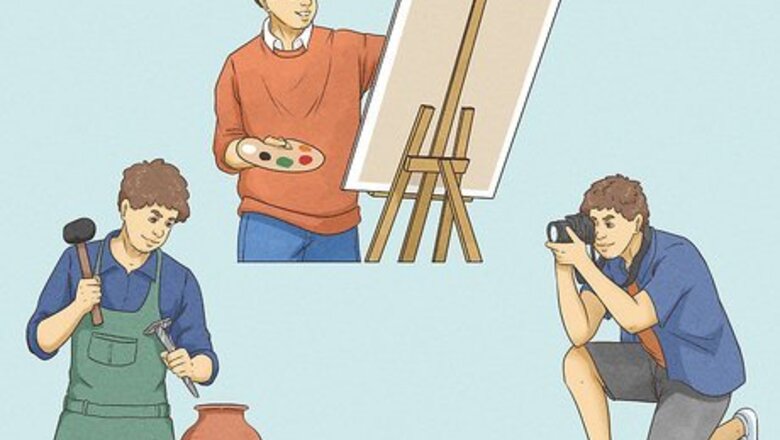
views
- Find a medium that suits you based on your strengths and weaknesses, work on your craft every day, seek out feedback, and create your personal style.[1]
- Enroll in formal courses, study great works of art, and connect with fellow artists to continue growing.
- To promote your work, circulate your portfolio, find public space to hang your art, and network with others in the art world.
Learning the Basics on Your Own
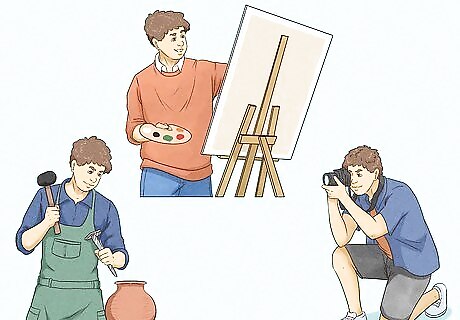
Try a generous selection of differing mediums of art. If you have never spent much time creating art, it may feel daunting to try to become an artist. The truth is, everyone is an artist; they just need to express their creative ideas in a great way. If there is a specific type of art you would like to learn more about, go for it, but don’t be afraid to branch out and try other mediums as well. Some of the most basic forms of art include: Drawing: This medium can range from the most basic of sketches to intricate architectural designs. Drawings are generally created with a pencil, pen, charcoal, or crayon. Drawings can be of objects placed right in front of you, or images out of your imagination. Painting: This medium uses paint brushes to create both real life and imagined images with paint. Painting often delves into the abstract--a painting made in red and purple hues might be a representation of a feeling--such as love--that the painter was feeling while he or she worked. Photography: Photography uses a film or digital camera to capture a moment in time. Photographs often tell us about what the world was like at the exact moment that the photo was taken. Photos can reflect great beauty or great horror--just as the world can too. Sculpting: Sculpting is the process of taking a material (clay, wood, metal, etc.) and shaping the material into a work of art or a functional tool (and sometimes both at the same time.)

Recognize your strengths and weaknesses. Once you have tried out all of the mediums, decide which ones you are stronger at. Often someone who is fantastic at creating sculptures out of clay cannot paint to save their life. Of course, there are other people who seem like they were created solely to be fantastic artists and excel at every medium. Another important thing to keep in mind is which medium you enjoy working with most. If you are fantastic drawer but feel yourself pulled toward sculpting, why not give this new medium a try.
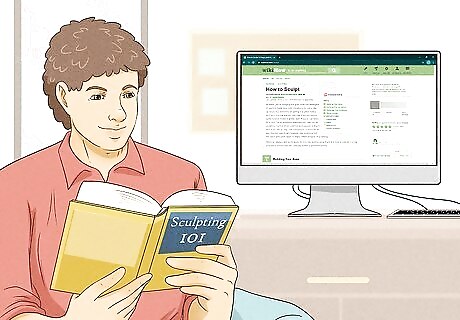
Do your research and learn the basics. Pick up some books on the medium(s) you have chosen to focus on (for now). Learn as much as you can about the medium—read books and articles, watch instructional videos, and research various methods and approaches other artists in your medium take. One of the best ways to learn is by studying the work of others who have come before you. It is completely possible to teach yourself how to be a great artist, you just have to put effort into learning the basics. If you feel like you need a little help, you can always supplement your research with an art class (see Part Two of this article.) Part of researching your medium means learning the basics about that medium. Learn about the color wheel (primary colors vs. secondary colors, how shading works, etc.) A key part of your research should consist of what supplies you will need to actually create art. If you can’t seem to find a specific list, you can also use an internet search engine and type in something like ‘basic art supplies needed for drawing.’
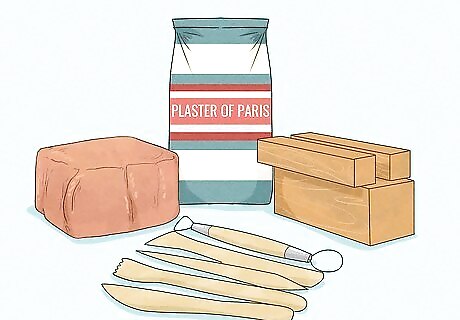
Get the supplies you will need for the medium you have chosen. Sadly, art supplies can be pretty costly--but very worth it. You can buy the supplies you need at large art and craft stores like Michaels, or you can find a local, smaller art store in your area. To find a smaller art store near you, pull up your favorite internet search engine and type in “art supply stores in [Your Hometown’s Name].” If you are not sure of what you need, or how necessary a particular item it, be sure to ask an attendant. Chances are they will turn out to be deep wells of artistic knowledge (they may even be able to point you in the direction of some art classes.)

Observe the world around you with the eye of an artist. A key part of being an artist is observing the world around you and reflecting it in your art work. Notice how the light changes during the day, how colors affect you, how an interaction makes you feel. As the saying goes, it is actually really important to stop and smell the roses. Take the time to become fully aware of your surroundings and let your observations seep into your work. For instance, if you see a couple sitting under a tree, notice how their bodies interact with the nature around them. What is the light like? What colors are predominant? How would you frame the scene--would you focus on their faces, on the colors, on the tree? Paying attention to how you see the world will help you to translate your observations into art.

Make time for your art every day. Many artists dedicate their lives to creating art. While you do not have to spend every single second of your day working on a painting, do try to dedicate some time each day (or every other day) to working on your project, whatever it might be. Make creating art a priority.
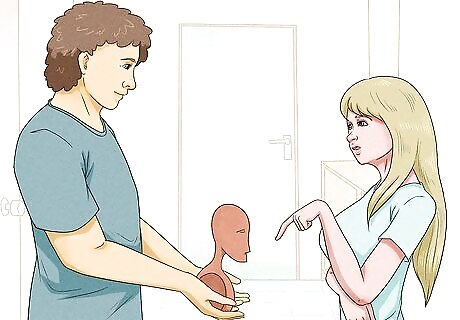
Seek out the opinions of others. Don’t be afraid to show your work to people. Value someone’s honest opinion, even if it is compiled of constructive criticism. Ask a few people whose opinion you value to look at your art. Don’t be discouraged if they aren’t gasping in awe--for most people it takes time to really develop a talent for creating art. Ask them what they think you could get better at. Maybe you have a hard time drawing hands, or you can’t seem to get the handle of a clay mug quite right. A second pair of eyes will help you to see what needs work.

Develop your own style. The best way to define yourself as a unique artist is to create your own style within the medium that you have learned. No one can teach you your own style--you need to discover it for yourself. Try experimenting with different techniques. Break yourself out of your comfort zone. For example, if you like to paint still-life paintings, try painting a still life by adding your own touch to it rather that simply replicating what is in front of you. Change the colors, make the subjects look cartoon-y or distorted in some way--play around with it.
Learning From Others
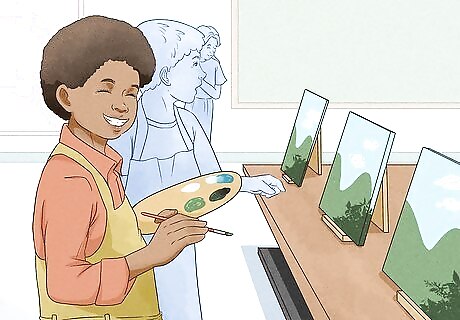
Enroll in local art classes. Perhaps the easiest way to learn the basics of any medium is to enroll in an art class. Art studios, schools, co-ops, and other groups will often hold art classes that can last anywhere for one night to many months. You will be taught by other artists who can show you how to master the basics of your medium, while also helping you to follow your own artistic path. To find art classes in your town, you can look at local newspaper event listings, talk to friends you might have in the artist community, or simply run a search for ‘art classes in [Name of Your Town]’ on your favorite internet search engine.

Study the masters. Visit museums and peruse books on all sorts of art and design. Learn from the masters by looking carefully at their works. A great way to hone your skill is to try to imitate the art of someone considered to be a master the world over. Try motifs and techniques that catch your interest. A great way to improve in your artistic medium is to select a work by a master and try to replicate it as best you can. For instance, if you want to improve your painting skills, pick a painting by Vincent Van Gogh, such as “Starry Night” and try to paint it. When you have painted it as close to the original as possible, paint it again, this time allowing yourself to go a little outside the original. Add details that you think you would have added, had you been standing next to Van Gogh looking up at that starry sky. Perhaps the colors would be different, the tree more (or less) defined, etc.

Go to art school. If you want to take your art career to the next level, you could consider going to art school. Some things to consider when picking an art school include reputation, costs, strength of the courses and professors, location, and facilities (do they have a dark room? a kiln? etc.) Consider if you think this school will bolster your strengths and improve your weaknesses. You will have to apply for any art school you want to attend. Find out how to do that here. You should also consider going to an art school vs. attending university. Some universities have excellent art programs. The main difference is that art schools will tailor their general education classes around art (for instance, a history GE course that might normally be ‘History of the United States’ would instead be ‘Artists in the American Revolution.’
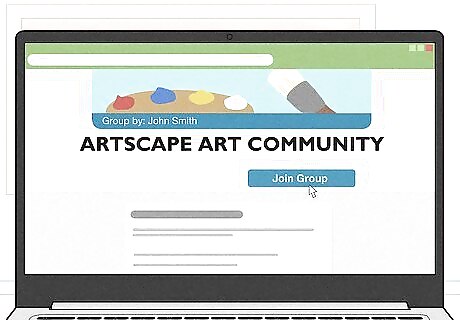
Make friends in the artist community. Making friends that have the same passion for art that you have is a great way to really immerse yourself in the world of art. Having artist friends can be beneficial because they can offer you criticism on your work (and actually know what they’re talking about,) teach you new techniques, and inspire you with their own work. To find like-minded artists, see if your town, school, or church has any artist clubs that you could join. You could look in newspaper event listings, or search for local groups on the internet. You could even consider joining a virtual art group--there are many online forums that you can become a part of and chat with people who love art as much as you do.
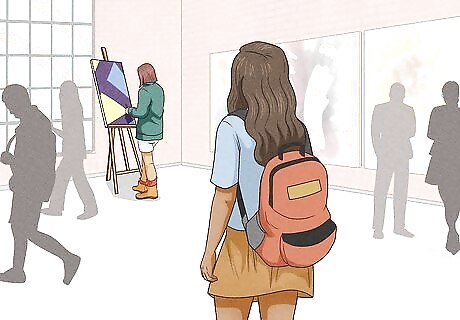
Visit art studios. Another great way to see what other artists are creating in your medium is to go to art gallery openings in your area. Art galleries are great places to meet people and see other artists’ work. You may find that you are inspired to try a new technique.
Promoting Your Work
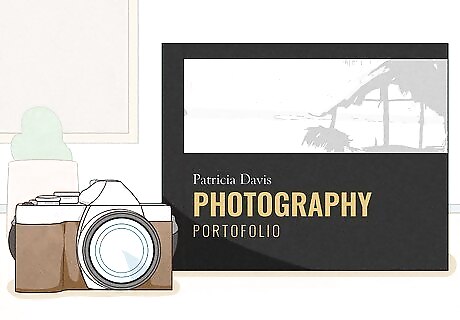
Create an art portfolio. A portfolio is a collection of your best work that you show to potential employers, clients, galleries, etc. It is essentially a reflection of what you are most proud of about your art. Only select the pieces you feel are your best work and reflect your style best. If you are a sculptor, take photos of your art to put into your portfolio. This is much easier than carrying a bunch of sculptures around with you wherever you go.
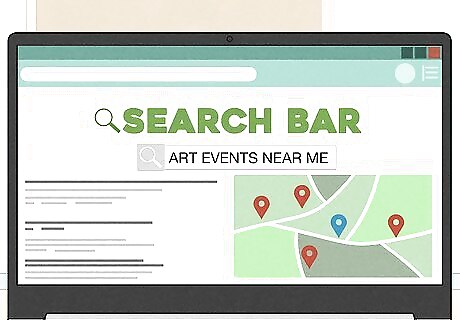
Network with people in the art world. As an artist just joining the art world, you will want to make as many connections as possible. Your network can consist of your family, friends, classmates, professors, bosses, mentors, etc. Ask these people in your network if they know of any artistic opportunities that you may be able to get involved with (i.e. gallery openings, free classes, places that like to show local art work, etc.). Look for art networking events in your area. Run an internet search of art events and networking opportunities in your area. Go out of your way to meet people who you think may be able to help you become a better artist or boost your career. If a professor says her world-famous painter friend is coming to town, and you are an aspiring painter, ask your professor if you could perhaps briefly meet with her friend. Don’t be let down if she says no--there are truly thousands of opportunities for you to build your network.
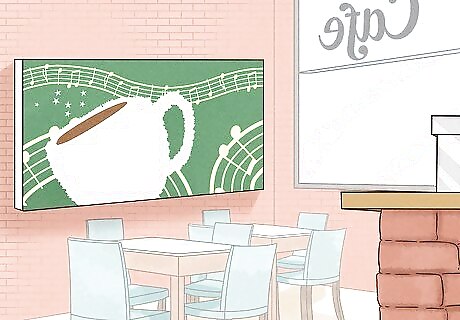
Find a venue where you can show your work. Showing your work is one of the best ways to get recognition for the pieces you have created. Find out if any local coffee shops, bars, restaurants, etc. ever hang the work of local artists on their walls. If they do, bring in a portfolio and show them some of your work. Find out if they would like to hang up your pieces for a set amount of time. You could also talk to local galleries and see if you could get some of your pieces into their next show. Galleries often like to promote local art.

Get internships with a master artist. In this case, internships are more like apprenticeships. Being a studio helper for a great artist in your medium can be one of the best ways to learn more about your medium (while also lodging you in the inner circle of the artist community.) If you have gone to art school, find out if any of your professors need a studio assistant or any help with projects that he or she is working on. Professors can be a great link to the more prominent art world, and working with them in their studio will help you to practice what they have taught you in their classes.




















Comments
0 comment